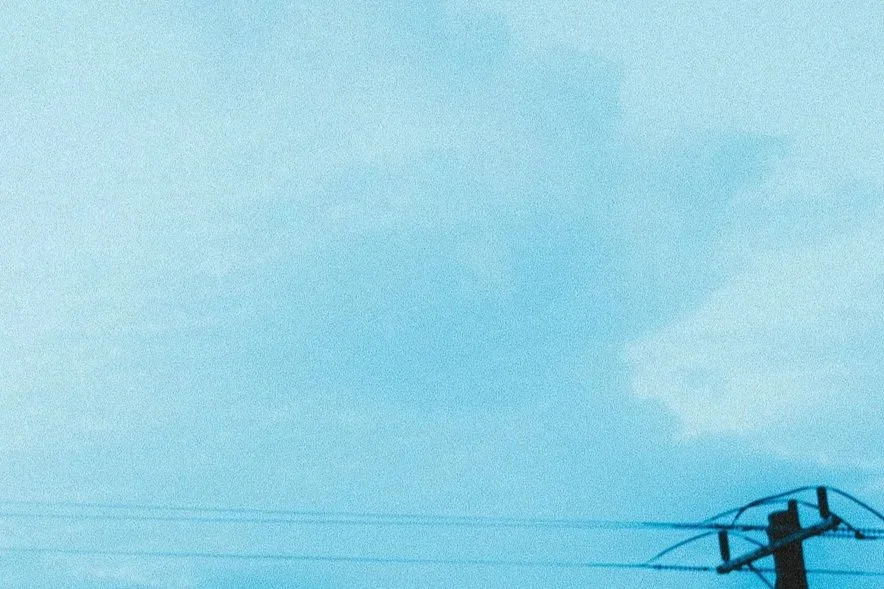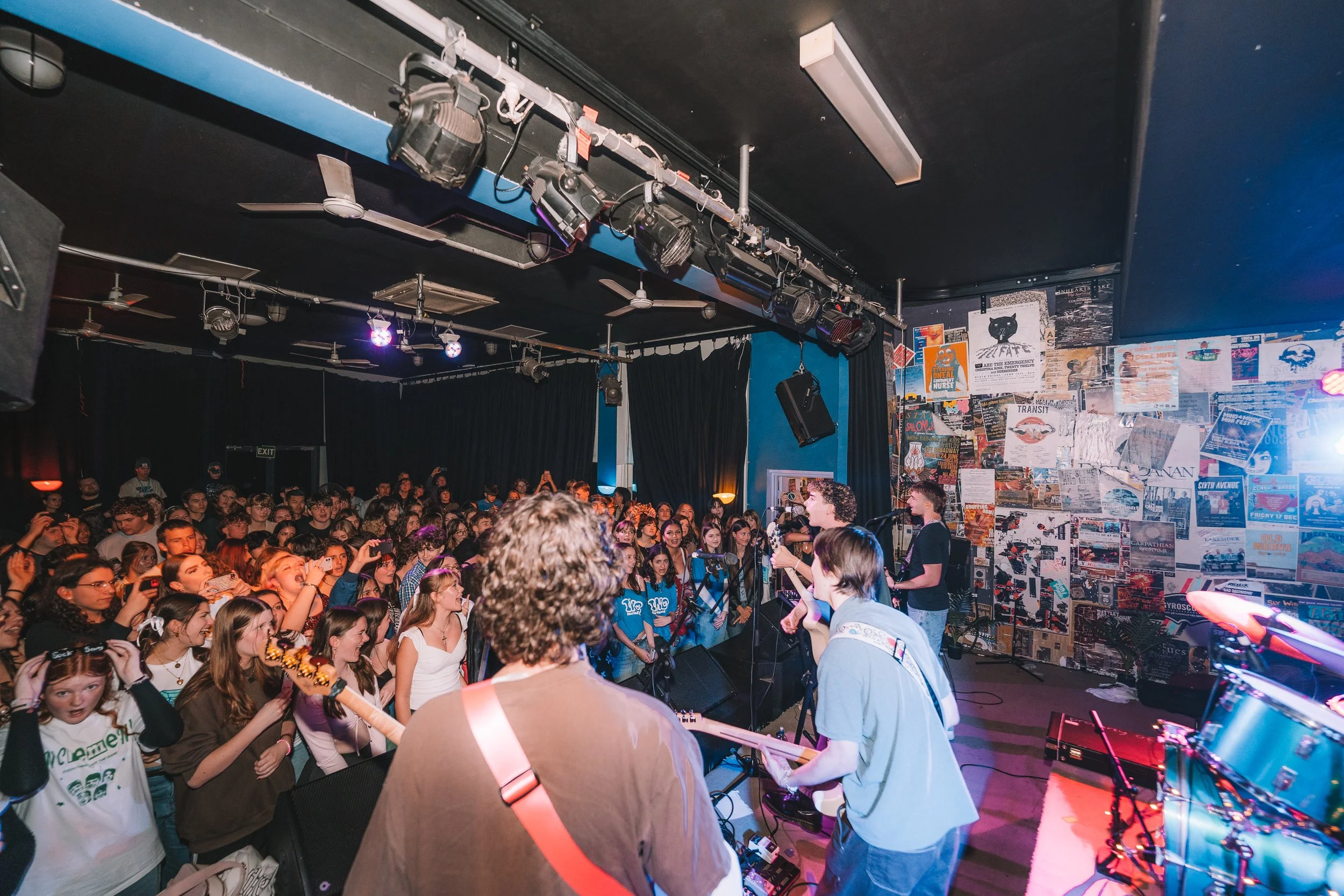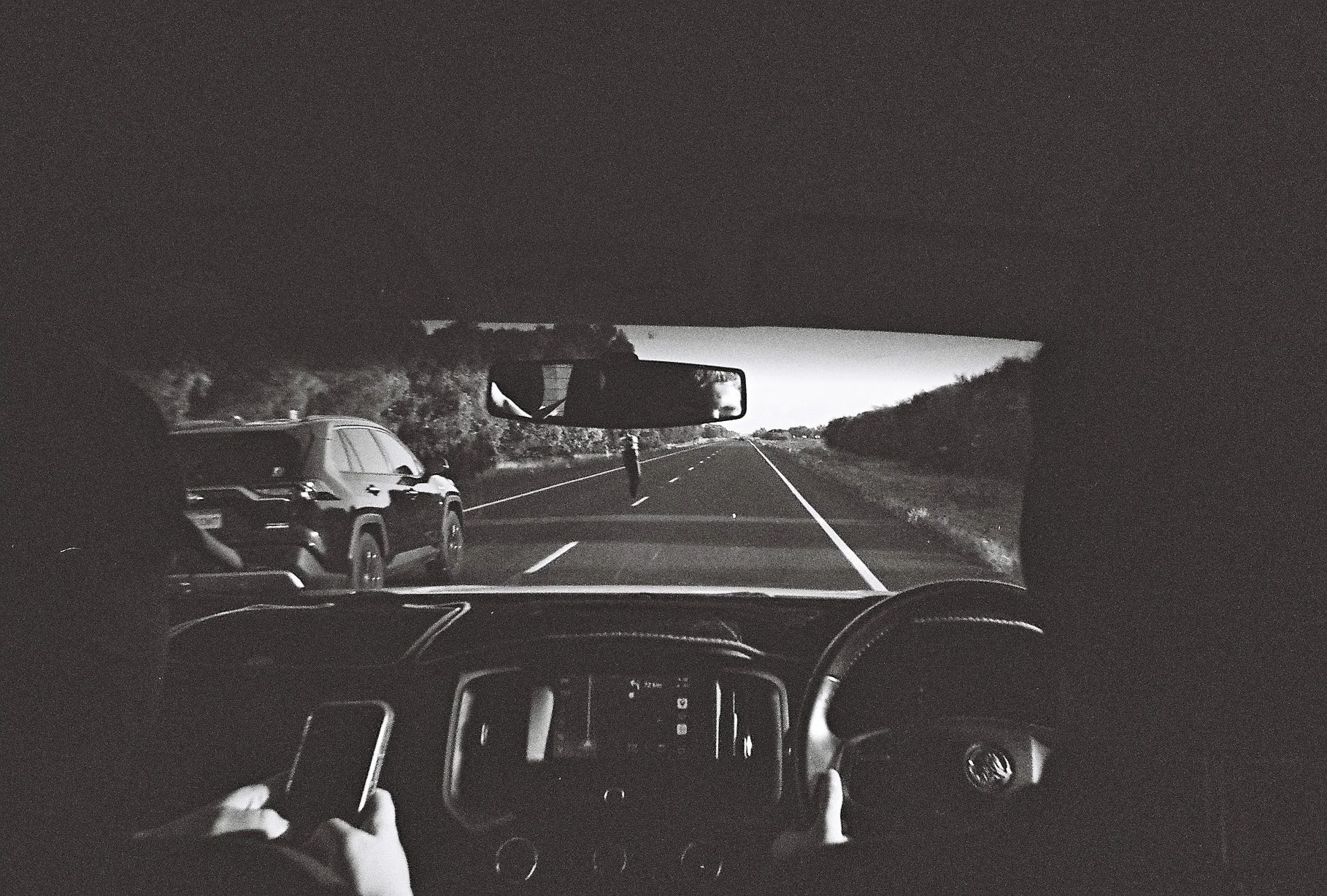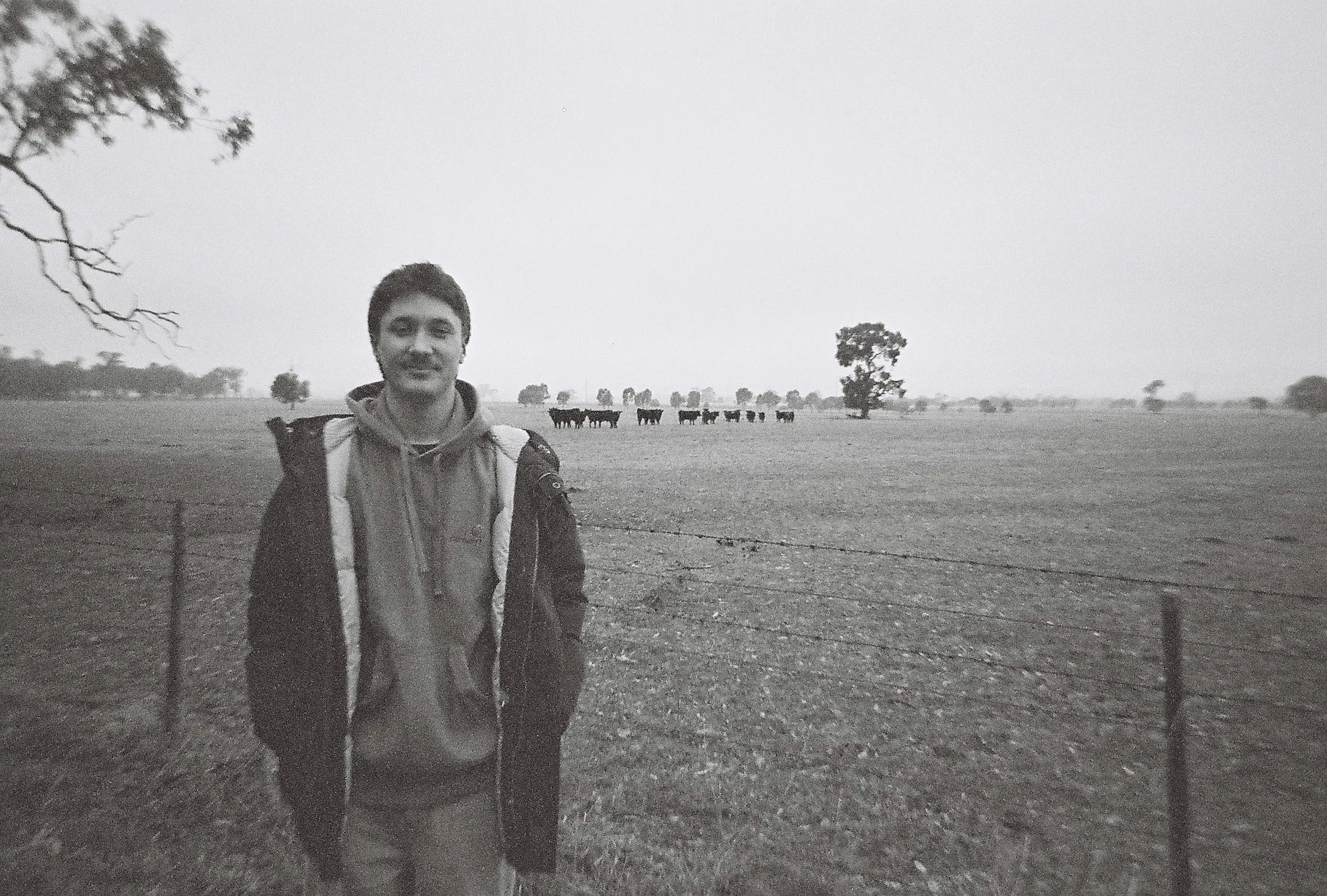
My Consumption BLOG
by Sasha Flack
Welcome to my blog, each day I will write a post about the different areas of consumption in my life and how they affect my understanding of consumption culture.
Shopping: Choices when consuming
Blog Post 1
26.09.2025
There are two areas of shopping I mainly take part in: food and retail shopping. My relationship with food is utilitarian and doesn’t carry pleasure for my lifestyle. If I could have a tube that fed me all meals of the day, I would. That isn’t to say that it’s purely a chore, I do enjoy the artistic nature of cooking, but eating itself brings me little joy. This contrasts how supermarkets often frame food as leisure and culture. Ritzer (1993) describes this understanding of everyday consumption as the “McDonaldization” of society where efficiency and predictability dominate. Food shopping is mainly systematic for me, not pleasurable. I go to the shops with the intent of buying the same ingredients that get me through every week.
Being a human, I must indulge in consuming to sustain myself, this is where the choices begin. First, where to shop. I live within a five-minute car ride of two grocery stores, IGA and Spudshed. The decision is simple most days, Spudshed is generally cheaper than IGA, as their “budget friendly” items tend to be at a lower cost. My decision often comes down to price, Xu & Lee (2020) address this as price rivalry which can prompt consumers to change behaviours and erode brand loyalty. This reflects my disdain for expensive supermarkets, being a broke university student I cannot risk losing money on essentially the same item. I like to spend time making sure I’m receiving the best deal. Geyskens, Gielens, & Gijsbrechts (2010) contest this by mentioning that the target audience for these premium brands are not me but high-end food consumers which allow them to advertise a superior, more expensive product. My class and cultural background draw me to always shop for less, but I can understand having stores that appeal to a higher class.
Buaman’s (2000) view on shopping however did speak to me in a way that made me adjust my view on the process. Mentioning that shopping isn’t just about food, but the search for nuance and variety in life. Among the never ending search for happiness, shopping gives us moments of change. This made me reflect on my own shopping skills and how my stubborn pickiness bleeds into other areas in my life. There are so many areas in which we need to be more competent, and each calls for 'shopping around' Buaman. I had never considered how my shopping skills could reflect myself being often stubborn and picky within other areas of life.
Retail shopping is a different world for me; I have a lot of issues with large fast fashion. Having produced merchandise myself, I hold myself accountable to consume ethically sourced, artisanal or second hand clothing. This stems from points raised by Hopkins & Reynolds (1990) that include the lengths retail stores go to keep consumers on premises. The idea behind that being that the longer they stay, the more money they will spend. Op shopping appeals to me as it acts as a low cost alternative to retail that rewards the consumer the longer, they stay in the store.
Til next time!
Sasha Flack, 26.09.2025
Music: Consumption as identity
Blog Post 2
27.09.2025
A large part of my identity is tied to music in many ways, whether I’m buying records, listening on a drive, attending local shows or creating my own, I am always surrounded and thinking of music. What speaks to me is the personal nature of song writing and the niche communities that are bound by those songs. It is not only an escape for me as a consumer but a business for me as a producer, having cultivated a community for myself which I touch on in my social media blog post.
Music also highlights the tension between consuming and producing. As some scholars argue, the media often promotes producing as superior to consuming. In music, this is considered learning an instrument and writing songs. This concept is addressed by Isabelle de Solier, “both producing objects and acquiring the skills to do so are often central to the models of self-improvement and self-actualization such media promote and are represented as having a higher moral value than consumption in this process.” My personal experience reflects this divide as someone who plays in a band. I often hear that creating is so important and more meaningful than consuming. Yet the consumption is equally central as without it my scene would lose its cultural and social weight.
Like other art forms, music isn’t without its issues. In the live scene, diversity and representation has been an area with room for improvement. Historically, there always has been issues with class and cultural capital. Bourdieu (1984) argued that cultural consumption is linked to class position, classical music for example being for the educated upper class. However, more recent studies argue that music has shifted in the modern world towards diversity regarding culture consumption (Coulangeon, 2016; Bennett et al., 2009). This on paper makes the arts more inclusive but my experiences lead me to believe that it’s more complex than that. While it’s true inclusivity among culture and class has been largely enhanced, especially in live music, hierarchies regarding taste are still present. Listening to niche genres now represents education while pop consumption is deemed to be “mainstream”, an echo of Bourdieu’s argument surrounding class tailored to today's youth, cultural consumption isn’t about enjoyment but about social positioning.
There are many rituals that go with consuming music with the most important being, of course, listening to music! Digital streaming services are the easiest way of consuming and finding new music in the modern world. Personally, I have found most of the music that shapes my identity through services such as Spotify and YouTube Music. Muchitsch and Werner (2024) argue that genres will continue to construct identity and difference in the era of music streaming. Their analysis states that, “algorithmic and human processes forming Spotify's genre metadata, playlist curation, and media discourse demarcate, organize, and structure genre in ways that remediate earlier formations of identity and difference in (popular) music cultures”. While I believe my identity has curated my taste, the idea that Spotify dictates the music I discover complicates that belief. I like to think of the songs I find through playlist curation as music I discovered on my own and not predetermined by an algorithm, but unfortunately this is not the case.
Another way streaming services challenge consumers' decisions is through posing ethical questions. Platforms like Spotify typically pay artists 0.003-0.005 cents per stream whereas platforms like Bandcamp allow artists to sell their songs digitally directly to fans at a set price. This separates music streamers into those who value a cheaper listening experience from those who value artists being paid. Bands have also started removing their music from platforms like Spotify in protest for these reasons as well as political associations with the brand.
In conclusion, whenever I buy merch, attend a local show, stream an artist's music or produce my own, I am not only supporting them but partaking in consumer rituals that ties my identity to a scene.
Thanks for reading!
Sasha Flack, 27.09.2025
Tourism: Consumption of place
Blog Post 3
28.09.2025
Travel has always been a part of my life, out of necessity and desire. I regularly fly over east to visit my dad in rural New South Wales and often travel regionally within Western Australia for music. Although these trips are within a routine, I enjoy being in new places even a few hours from home. The type of pleasure is different from shopping or music consumption. It’s not as much about spending money but enjoying an experience that cannot be recreated or rebought. Urry (2002) describes this as the “tourists gaze” which is the systemised way of experiencing new places, how everyday expectations of culture shape that experience. For me, I spent a few years growing up in rural Poland, this makes me nostalgic for greenery and mountain landscape. I always feel relaxed when surrounded by this kind of environment. This demonstrates that the tourist gaze isn’t limited to trips abroad, but something that impacts my enjoyment positively when experiencing landscape. Urry highlights that tourism is just a notion of departure from day to day life, it’s more about seeing oneself seeing.
Buaman (2000), as mentioned in a previous blog, speaks about the importance of variety and nuance present in the mundane of shopping. I believe this view can be applied to travel. As I tour regional Western Australia or travel over east, the same desire for change is what drives these decisions. Whether to play in the same town or somewhere new or whether to take different roads all stem from this ideology. When applied, tourism can be an extension of consumer culture. The experience being of higher value than the material goods themselves. This also factors into class, Bourdieu (1984) mentions that cultural consumption (including travel) all entails economic cost reflection one’s class position. International trips are seen by higher classes as regular travel whereas for me I must plan well in advance financially. For example, I’m traveling to Japan next month which I had to plan a year ago to be able to support myself, even so I’m using budget airlines and cheap accommodation. However, that is not to say I don’t have any points of privilege, I am able to visit national places in Australia regularly which can reflect cultural capital. This applies to my band’s tours, in how the symbolic idea of being on tour is more glamorous than the tour itself.
On a separate note, I find it important to ensure my perspective of tourism in Australia does undermine the cultural significance of the land to Indigenous Australians. Frost (2007) shares this thought, “As tourism has developed there have been widely held fears that mass beach resort tourism will overwhelm all of Broome's special cultural and heritage attractions.” His analysis of Broome’s heritage resonates with my own views of preservation and history. He argues that although a lot of what the media displays is tourists wanting exotic beach getaways, there is still an audience that values culture and historical nature. While some people might have concern for regional towns being turned into Eurocentric escapes. Frost is confident that this understanding misses the point of tourism, the value is the preservation for a lot of consumers. As I travel to Japan next month, I plan to respect these ideas of preservation when entering a new culture. This authenticity is found in the pursuit of real culture, I want to look at temples and go on tours of cities, but I understand that they’re curated for tourists like me, a commercialised version of authenticity. This reflects how tourism often offers a watered down version of culture that’s easier to consume.
But that’s all for today, thank you for reading!
Sasha Flack, 28.09.2025
References
Bauman, Z. (2000). Liquid Modernity. Reis, 44(110), 239. https://doi.org/10.2307/40184692
Bourdieu, P. (1984). Distinction A Social Critique of the Judgement of Taste 1984. https://monoskop.org/images/e/e0/Pierre_Bourdieu_Distinction_A_Social_Critique_of_the_Judgement_of_Taste_1984.pdf
de Solier, I. (2013). Food and the Self : Consumption, Production and Material Culture. Link.library.curtin.edu.au. https://ebookcentral.proquest.com/lib/curtin/detail.action?docID=1394891
Ditto Music. (2023, January 5). How Much Does Spotify Pay Per Stream in 2022. Dittomusic.com. https://dittomusic.com/en/blog/how-much-does-spotify-pay-per-stream/
Frost *, W. (2004). Heritage tourism on Australia’s Asian shore: a case study of Pearl Luggers, Broome. Asia Pacific Journal of Tourism Research, 9(3), 281–291. https://doi.org/10.1080/1094166042000290673
Muchitsch, V., & Werner, A. (2024). The Mediation of Genre, Identity, and Difference in Contemporary (Popular) Music Streaming. Twentieth-Century Music, 21(3), 1–27. https://doi.org/10.1017/S1478572223000270
Noble, G., & Ang, I. (2018). Ethnicity and cultural consumption in Australia. Continuum, 32(3), 296–307. https://doi.org/10.1080/10304312.2018.1453464
Ritzer, G. (1993). The McDonaldization of society: an investigation into the changing character of contemporary social life. In The Open Library. Pine Forge Press. https://openlibrary.org/books/OL1715123M/The_McDonaldization_of_society
Urry, J. (1990). The Tourist Gaze. https://www.negrophonic.com/pdfs/Urry-The_Tourist_Gaze_2nd_Edition.pdf
Wrigley, N. (2002). e-Reader | Taylor & Francis Group eBooks, Reference Works and Collections. Taylorfrancis.com. https://www.taylorfrancis.com/reader/read-online/b310e5e7-0c28-4c30-b448-80a018320f34/chapter/pdf?context=ubx
Xu, E., & Lee, T. (2019). Supermarket magazines and foodscape mediation in Australia. Communication Research and Practice, 6(2), 1–14. https://doi.org/10.1080/22041451.2019.1651564





